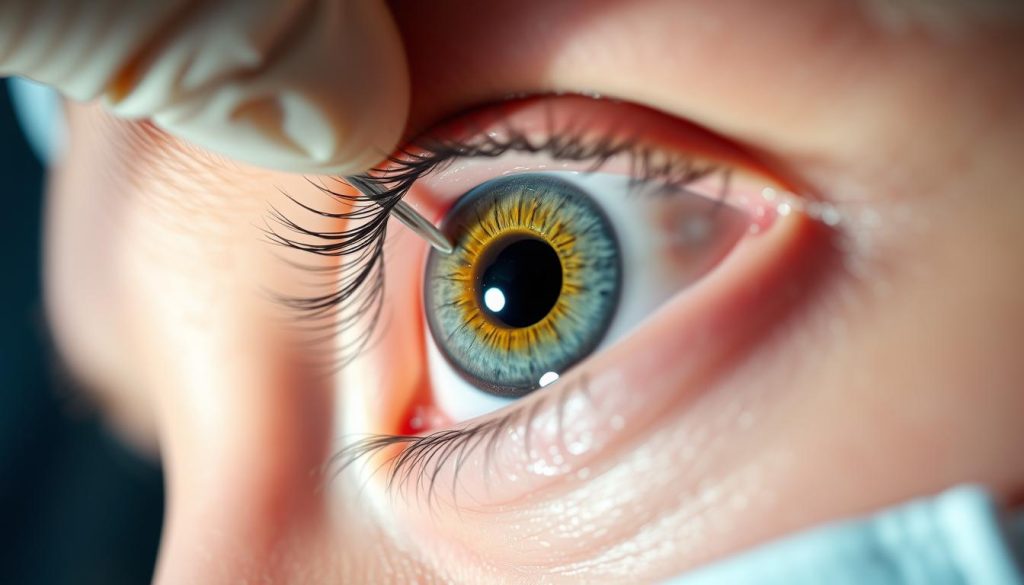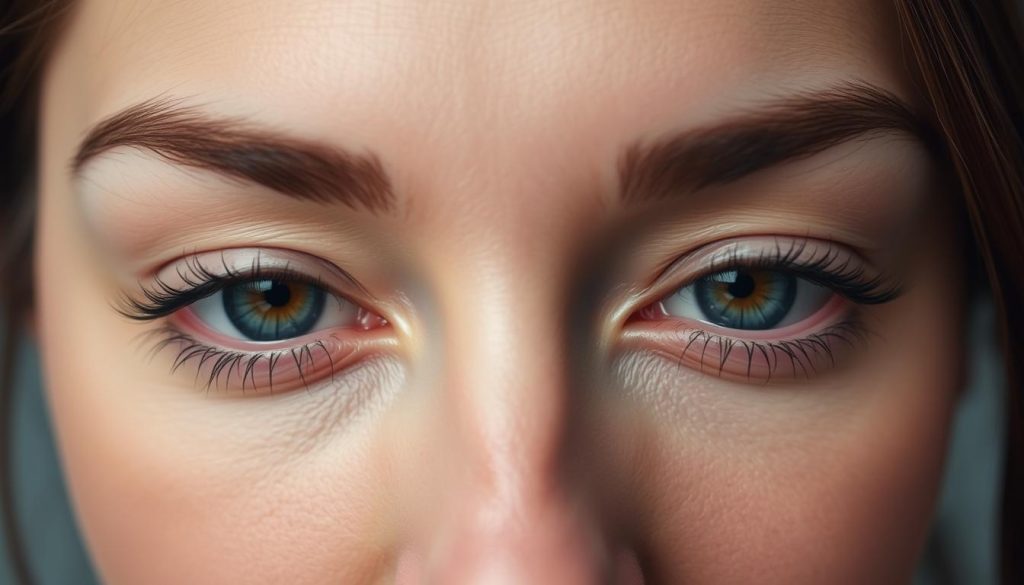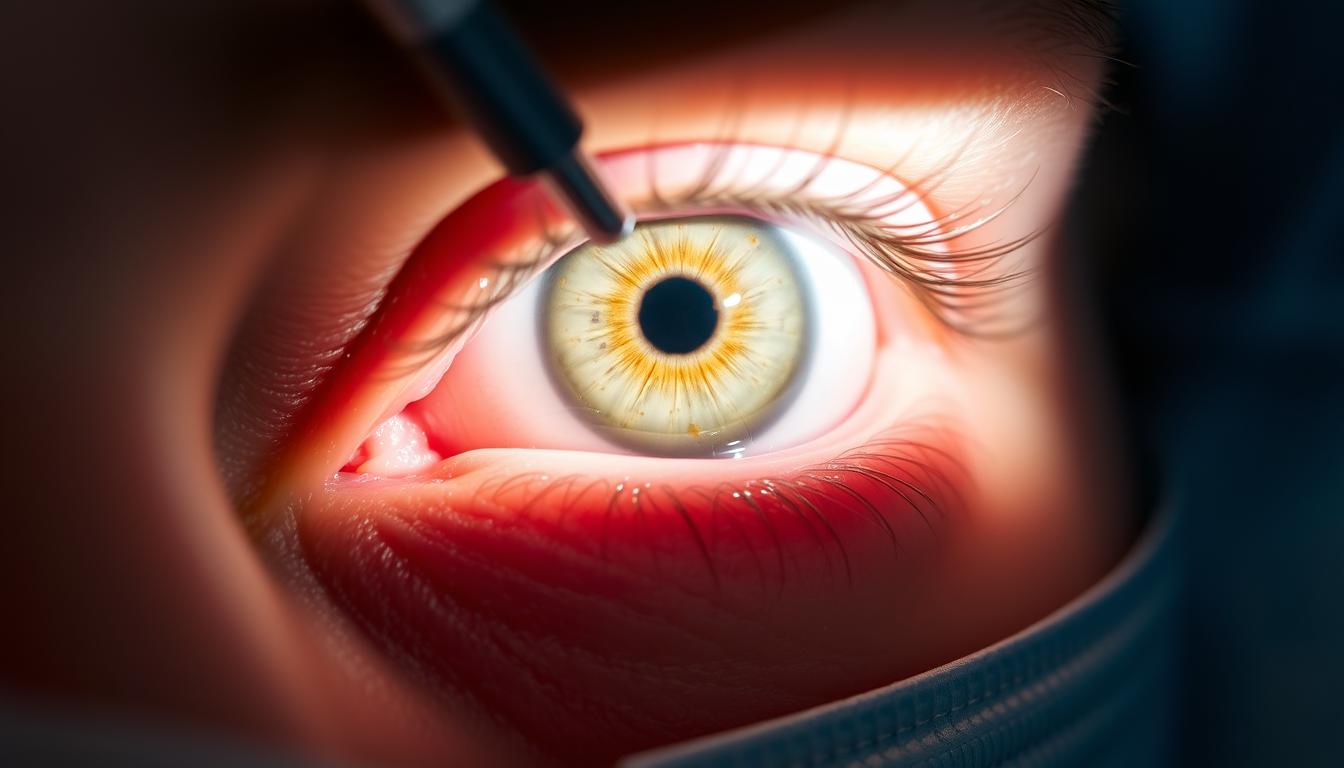Blepharoplasty, or eyelid surgery, is a specialized procedure designed to rejuvenate the appearance of aging or tired-looking eyes. This surgical intervention aims to improve the overall appearance of the eyelids, addressing issues such as drooping skin and reducing the look of tired eyes.
By undergoing blepharoplasty, individuals can achieve a more youthful and refreshed look. The procedure involves removing excess skin and fat from the upper and lower eyelids, thereby enhancing the overall aesthetic of the eyes. While surgery is generally safe, understanding the risks and benefits is crucial.
Key Takeaways
- Blepharoplasty is a surgical procedure that improves the appearance of the eyelids.
- The procedure involves removing excess skin and fat from the upper and lower eyelids.
- Blepharoplasty can enhance the overall aesthetic of the eyes, achieving a more youthful look.
- Understanding the risks and benefits of the surgery is essential for informed decision-making.
- The ideal candidate for blepharoplasty is someone looking to rejuvenate their appearance.
- Realistic expectations about the results are crucial before undergoing the procedure.
Understanding Blepharoplasty: The Basics of Eyelid Surgery
Blepharoplasty, or eyelid surgery, is a delicate procedure that aims to rejuvenate the appearance of the eyes. This surgical procedure involves modifying the tissues around the eyes to create a more refreshed and youthful appearance.
What Is Plastic Surgery of the Eyelid?
Plastic surgery of the eyelid, commonly known as blepharoplasty, is a specialized surgical procedure that addresses various concerns around the eyes. It typically involves removing or repositioning excess skin, fat, and sometimes muscle from the upper and/or lower eyelids. This procedure can be performed for both cosmetic and functional purposes.
The eyelids are home to the thinnest, most delicate skin on the body, making them prone to early signs of aging. Blepharoplasty is highly customizable and can be tailored to address specific concerns while maintaining natural-looking results.
Common Reasons People Choose Eyelid Surgery
Many individuals choose eyelid surgery to address persistent puffiness, remove excess skin that creates a hooded appearance, reduce under-eye bags, and minimize fine lines and wrinkles around the eyes. The procedure can also correct vision impairment caused by drooping upper eyelids that obstruct the field of vision.
By undergoing blepharoplasty, patients can achieve a more refreshed and youthful appearance, enhancing their overall facial aesthetics.
Types of Eyelid Procedures
Eyelid procedures are broadly classified into upper and lower eyelid surgeries, each with its unique objectives. These surgical interventions are designed to address various aesthetic and functional concerns related to the eyelids.
Upper Eyelid Surgery: Addressing Drooping and Excess Skin
Upper eyelid surgery, also known as upper blepharoplasty, is a procedure that targets the upper eyelids. It involves making an incision in the natural crease above the eye, through which excess skin and fat are removed, and/or the surrounding muscles are adjusted to achieve the desired improvements. This surgery primarily focuses on removing excess skin that may create a hooded appearance, correcting drooping eyelids (ptosis), and eliminating puffiness caused by protruding fat deposits.

Lower Eyelid Surgery: Reducing Bags and Puffiness
Lower eyelid surgery, or lower blepharoplasty, is performed to address concerns such as under-eye bags, puffiness, and wrinkles. Surgeons may use either a transcutaneous approach (with an incision just below the lash line) or a transconjunctival approach (with an incision inside the lower eyelid) depending on the specific corrections needed. The goal is to remove or reposition fat deposits and tighten loose skin, resulting in a smoother and more youthful appearance.
| Surgery Type | Key Objectives | Surgical Approach |
|---|---|---|
| Upper Eyelid Surgery | Remove excess skin, correct ptosis, eliminate puffiness | Incision in natural crease above the eye |
| Lower Eyelid Surgery | Address under-eye bags, puffiness, and wrinkles | Transcutaneous or transconjunctival approach |
Benefits and Expected Results of Eyelid Surgery
Eyelid surgery provides both cosmetic and functional advantages, making it a popular choice for individuals looking to improve the appearance and functionality of their eyes. With the excess skin removed, patients can enjoy a more refreshed and youthful look.
Cosmetic Improvements
A successful eyelid surgery creates a more alert and refreshed appearance by removing excess skin and fat that contribute to a tired or aged look. This results in a more youthful appearance around the eyes.
Functional Benefits
Upper eyelid surgery can dramatically improve vision for patients whose drooping eyelids obstruct their visual field. Many patients report increased comfort after surgery, with reduced heaviness in the upper eyelids and less strain from constantly trying to keep their eyes open wider.
Longevity of Results
With a healthy lifestyle and good skincare habits, the results of cosmetic eyelid surgery should last for years. While the aging process continues, the improvements from eyelid lift remain, meaning patients will always look better than if they hadn’t undergone the procedure.
| Benefits | Description |
|---|---|
| Cosmetic Improvements | More alert and refreshed appearance |
| Functional Benefits | Improved vision and comfort |
| Longevity of Results | Lasting results with proper care |

The Surgical Process: What to Expect
Understanding the surgical process for eyelid surgery is crucial for setting realistic expectations. The process involves several key steps, from initial consultation to post-surgery recovery.
Pre-Surgery Consultation and Planning
The eyelid surgery process begins with a comprehensive consultation where the surgeon evaluates your facial anatomy, discusses your aesthetic goals, and determines the most appropriate surgical approach for your specific needs.
During this initial consultation, your medical history will be reviewed, and the surgeon will explain potential risks and benefits, ensuring you have realistic expectations about what the procedure can achieve.
Anesthesia Options and Procedure Details
On the day of surgery, anesthesia options typically include local anesthesia with sedation or general anesthesia, depending on the complexity of the procedure and patient preference.
The surgical procedure itself is precisely executed, with the surgeon making carefully placed incisions that follow natural creases or are positioned inside the eyelid to minimize visible scarring.
Typical Duration and Same-Day Recovery
Eyelid surgery typically takes between 45 minutes to 2 hours to complete, depending on whether both upper and lower eyelids are being addressed and if any complementary procedures are being performed simultaneously.
Following the procedure, patients are monitored in a recovery area before being released to go home the same day, with detailed aftercare instructions and any necessary prescriptions provided.
Recovery and Aftercare Following Eyelid Surgery
The recovery process following eyelid surgery is a critical period that requires careful attention and adherence to aftercare instructions. During this time, patients can expect to experience some visible bruising and swelling, with their eyelids potentially feeling tight.
Managing the Initial Recovery Phase
During the first week, managing swelling and discomfort is crucial. Using cold compresses and keeping the head elevated while sleeping can help alleviate these symptoms. Patients are advised to avoid strenuous activities and follow their surgeon‘s aftercare instructions diligently.
Returning to Normal Activities
By the second week, most visible bruising begins to subside, although some swelling may persist. Many patients feel comfortable returning to work and social activities at this point. It is essential to continue avoiding strenuous exercise and activities that could impact the surgical area until cleared by the surgeon.
Essential Aftercare for Optimal Results
Long-term care includes diligent sun protection and maintaining a healthy lifestyle. Following the surgeon‘s specific recommendations can help preserve and extend the results of the eyelid lift. A well-planned aftercare routine is vital for ensuring the best possible outcome for the eyes and eyelids.
| Recovery Stage | Timeline | Key Activities |
|---|---|---|
| Initial Recovery | 1-2 weeks | Manage swelling, rest, follow aftercare instructions |
| Returning to Normal | 2-4 weeks | Gradually resume activities, avoid strenuous exercise |
| Long-term Care | 1-3 months+ | Sun protection, healthy lifestyle, follow surgeon’s recommendations |
Making an Informed Decision About Eyelid Surgery
When considering eyelid surgery, it’s crucial to make an informed decision. This involves thorough research, careful consideration of your aesthetic goals, and consultation with qualified surgeons who specialize in facial plastic procedures.
To ensure a successful outcome, prioritize board certification in plastic surgery or oculoplastic surgery, extensive experience specifically with eyelid procedures, and a portfolio of before-and-after photos that demonstrate consistent, natural-looking results.
Consider how eyelid surgery might complement other facial rejuvenation approaches, such as brow lifts or laser resurfacing for fine wrinkles around the eyes. Realistic expectations are crucial—understand that while eyelid surgery can dramatically improve the appearance of the eye area, it cannot stop the natural aging process or completely transform your appearance.
Financial considerations should include not only the surgeon’s fee but also anesthesia costs, facility fees, and potential expenses related to recovery time away from work. Take time to understand the potential risks and complications associated with eyelid surgery.
FAQ
What is blepharoplasty, and how does it improve the appearance of the eyes?
Blepharoplasty is a surgical procedure that involves removing excess skin, fat, and muscle from the upper and lower eyelids to give the eyes a more refreshed and youthful appearance.
Will blepharoplasty affect my vision?
In some cases, drooping eyelids can impair vision. By removing excess skin and fat, blepharoplasty can improve vision by allowing for a clearer field of view.
What are the differences between upper and lower blepharoplasty?
Upper blepharoplasty addresses issues such as drooping eyelids and excess skin, while lower blepharoplasty targets bags, puffiness, and dark circles under the eyes.
Is blepharoplasty performed under local or general anesthesia?
Blepharoplasty is typically performed under local anesthesia with sedation, allowing patients to remain comfortable during the procedure.
How long does it take to recover from blepharoplasty?
The initial recovery period typically lasts around one to two weeks, during which time patients may experience swelling, bruising, and discomfort. Most people can return to their normal activities within two to four weeks.
Can laser resurfacing be used in conjunction with blepharoplasty?
Yes, laser resurfacing can be used to address fine lines, wrinkles, and skin texture around the eyes, often in conjunction with blepharoplasty, to achieve a more comprehensive rejuvenation.
Are the results of blepharoplasty permanent?
While blepharoplasty can produce long-lasting results, the natural aging process will continue, and some changes may occur over time. However, the results can last for many years.
